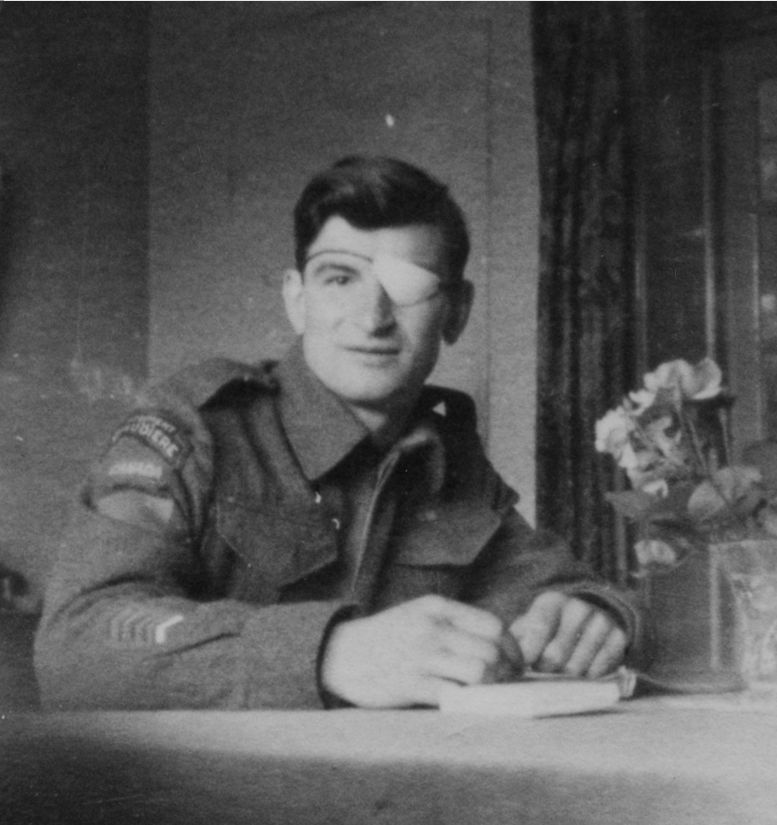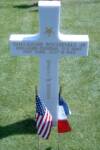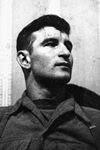Atomic Bomb: World's Most Terrifying Weapon
The War Illustrated, Volume 9, No. 214, Page 278, August 31, 1945.
“It is now for Japan to realize in the glare of the first atomic bomb which has smitten her”, declared Mr. Churchill in a memorandum issued from 10, Downing St., on August 6, 1945, “what the consequences will be of an indefinite continuance ... This revelation of the secrets of Nature, long mercifully withheld from man, should arouse the most solemn reflections in the mind and conscience of every human being capable of comprehension.” See also story in page 280.
Threatening Japan with annihilation, the atomic bomb is the most staggering invention of this war. The first one was dropped by an American Super-Fortress on Hiroshima, important Japanese Army base with over 300,000 inhabitants, on August 6, 1945. “That bomb”,. According to a statement by President Truman, issued from the White House, “had more power than 20,000 tons of T.N.T. It had more than 2,000 times the blast power of the British 'Grand Slam' (ten-tonner), the largest bomb yet used in the history of warfare.” This makes the effect of a single atomic bomb approximately equivalent to a raid by 2,000 Super-Fortresses.
“One of our major worries in Europe”, said Gen. Carl Spaatz, commander of the Strategic Air Forces in the Pacific, “was the fear that the Germans had perfected some secret weapon comparable to this. The Germans were actually experimenting in this direction in a huge factory at Oranienburg (on the northern edge of Berlin), but we wiped out the factory in a big raid in the spring of this year.” In answer to a question as to whether the new bomb would have speeded the end of the European War, he replied, “If we had had it, it might have shortened the war by six or eight months. We might not even have had a D-Day.”
It was Japan's fate to be the testing-ground of this amazing result of British and American research carried out at a cost of £500,000,000. Work was first done mainly in the Universities of Oxford, Cambridge, London (Imperial College), Liverpool and Birmingham. At the time of the formation of the Coalition Government in 1940, responsibility for co-ordinating the work and pressing it forward lay with the Ministry of Aircraft Production, advised by a Committee of leading scientists presided over by Sir George Thomson – and there was a full interchange of ideas between these scientists and their colleagues in the United States.
In late October 1941, President Roosevelt sent to Mr. Churchill a letter suggesting that any extended efforts on this important matter might usefully be co-ordinated or even jointly conducted. Accordingly all British and American efforts were combined and a number of the British scientists concerned proceeded to the U.S. Apart form these contacts, complete secrecy guarded all these activities and no single person was informed whose work was not indispensable.
By the summer of 1942, Great Britain being overbusy with war output, it was decided to build the requisite full-scale production plants in America. And Mr. Churchill has paid tribute to Canada's co-operation: “The Canadian Government provided both indispensable raw material for the project as a whole and also necessary facilities for the work on one section which has been carried out in Canada by the three Governments in partnership.”
As part of the great co-operative effort, Canada had undertaken (it was announced by Mr. C. D. Howe, Canadian Minister of Munitions, in August 1945) to build a pilot plant for the purpose of investigating one of the methods of making material which is required for the atomic bomb. Canada also supplies uranium, which is the raw material on which this new source of power at present depends.
One of the places where the atomic bomb was made is Oak Ridge, a “secret” city in Tennessee. Extraordinary measures were taken to seal off the workers from the outside world. About 125,000 laboured there but none spoke of it. To make security possible in the first place, every worker before he was taken on had his record closely inquired into and the same attention was given to the members of his family. If a single doubt arose, the seeker of employment at Oak Ridge was turned down.
Locality and factory cost £276,500,000 to build and equip. Today Oak Ridge's houses number 10,000, and dormitory beds total 13,000. For the 11,000 children nine schools are provided and amenities include a hospital. There were other areas similarly engaged, as revealed by President Truman:
“More than 125,000 people worked to construct atomic bomb factories in the U.S., and more than 65,000 are now engaged at two great operating plants and many lesser factories. Many have worked there for two and a half years. Few know what they have been producing. They see great quantities of material going in ant they see nothing coming out of these plants. For the physical size of the exploding charge is exceedingly small. The Potsdam ultimatum (he added) was issued to spare the Japanese people from utter destruction. Their leaders promptly rejected the ultimatum. We are now prepared to obliterate more rapidly and completely every productive enterprise the Japanese have above ground in any city.”
That obliteration began at Hiroshima. After General Spaatz had issued a communiqué from Guam to the effect that reconnaissance photographs showed that 60 per cent of the city had been destroyed. Tokyo broadcast (on August 8) that “The destructive power of the bomb is beyond words. When buildings were hit every living being outside simply vanished into air because of the heat, and those indoors were killed by indescribable pressure and heat.”
Who invented the atomic bomb? In answer to that question, Sir Edward Appleton, head of Britain's Department of Scientific and Industrial Research, declared that the final result had been the product of many brains. “But everyone would agree that the starting point of this wonderful discovery was the pioneer work of the late Lord Rutherford (in 1919 Lord Rutherford for the first time made an atom explode), whose experiments on the artificial disintegration of nitrogen directed attention to the stores of energy locked up in the heart of the atom.” Earlier pioneer work, however, had been done by Sir J. J. Thomson, whose on, Sir George Thomson, was head of the panel of British scientists working on the bomb.
And so at long last we have freed the energy of the atom. Will the atom become mankind's master? Sir John Anderson, who as Lord President of the Council was appointed by Mr. Churchill to be responsible for atomic research, has said: “We have got to see to it that the colossal energy created by the atomic bomb is harnessed for the benefit of mankind ... War purposes have been given absolute priority, but the basic investigations, the fundamentals of the whole thing, will stand when investigation is made into using the energy of the bomb for industrial development. My opinion is that it will take a long time ... The cost of producing the essential materials is very great.”
And how is the awful secret of the atomic bomb to be kept only in the hands of those well disposed to their fellow men? It is a problem of the first magnitude. “We must indeed pray”, says Mr. Churchill, “that these awful agencies will be made to conduce to peace among the nations, and that instead of wreaking measureless havoc upon the entire globe they may become a perennial fountain of world prosperity.”
Index
Previous article
Now It Can Be Told! - Eight Men to Guard the King
When this country faced invasion, after the withdrawal of the B.E.F. from France by way of Dunkirk, in 1940, prompt and serious consideration had to be given to the safety of Their Majesties and the t
Next article
I Was There! - We Dropped the First Atomic Bomb On Japan
Two men in the Super-Fort which dropped the atomic bomb on Hiroshima on August 6, 1945 – Col. P. W. Tibbets, the pilot (awarded the Distinguished Flying Medal immediately he returned from the raid),






